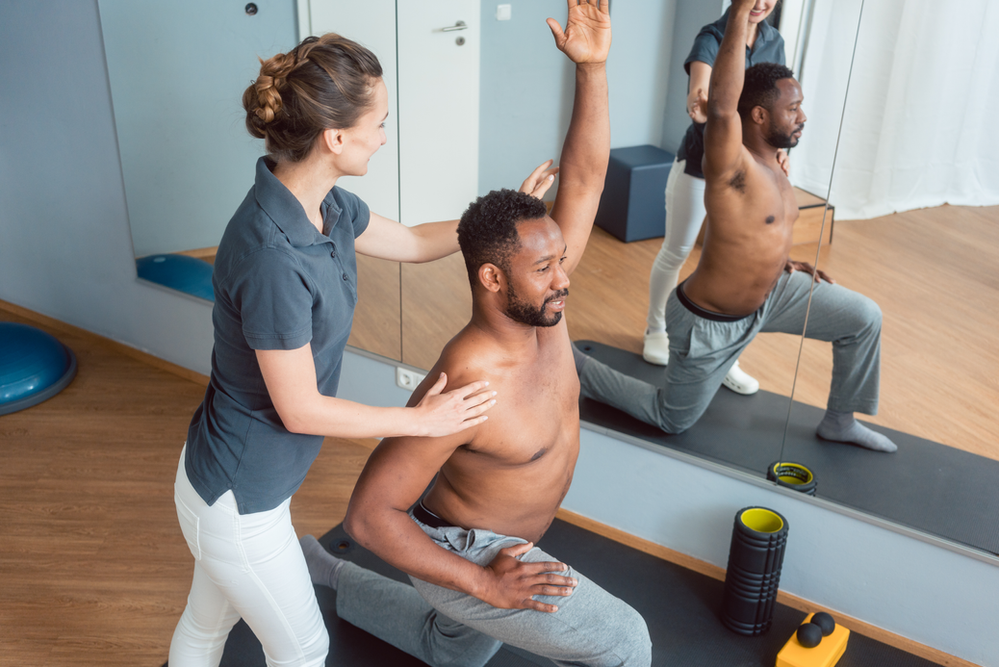Alleviate Chronic Pain: Effective Physiotherapy Techniques for a Better Life
As you know chronic pain affects millions of people worldwide and after covid it has significantly increased in number, impacting their quality of life. You cannot hide the truth people are now quite aware of the dangers of long-term opioid use, non-pharmacological chronic pain treatment options have become increasingly popular. Out of many such alternate therapies Physiotherapy is one such approach that can effectively help alleviate chronic pain. This comprehensive guide explores various physiotherapy techniques for chronic pain management, common causes of chronic pain, and tips for living a fulfilling life with chronic pain.
Understanding Chronic Pain
Chronic pain is pain which is preasent all the time and that lasts for at least three months. It can arise from various conditions to mention few they are fibromyalgia, neuropathic pain, and chronic fatigue syndrome, and many more which are somewhat similar to these. Living with chronic pain can be challenging and with that comes depression, you need to understanding its root causes it’s crucial for developing effective strategies for chronic pain management.
Common Causes of Chronic Pain and How to Address Them
Fibromyalgia: This widespread musculoskeletal pain disorder often involves fatigue, sleep disturbances, and tender points. Physiotherapy that includes gentle stretching and strengthening exercises, can help manage fibromyalgia symptoms.
Neuropathic Pain: Resulting from nerve damage, neuropathic pain can cause burning, shooting, or stabbing sensations. Physiotherapy treatments, such as transcutaneous electrical nerve stimulation (TENS) and nerve gliding exercises, can provide excellent relief.
Chronic Fatigue Syndrome: This complex disorder is characterized by extreme fatigue and pain, often triggered by physical or mental activity. Graded exercise therapy, a form of physical therapy that gradually increases activity levels, can help manage symptoms.
Effective Strategies for Chronic Pain Management: Top 5 Physiotherapy Techniques
-
- Manual Therapy: A hands-on approach involving joint mobilization, manipulation, and soft tissue techniques can improve joint mobility and reduce muscle tightness.
- Exercise Therapy: Personalized exercise programs help strengthen muscles, increase flexibility, and improve overall function.
- Hydrotherapy: It is the use of water and different flow of current for treatment. Such water therapy exercises can help reduce pain and inflammation, providing a low-impact alternative to land-based exercises.
- Dry Needling: This technique involves the insertion of thin needles into trigger points to release muscle tension and alleviate pain.
- TENS: Transcutaneous electrical nerve stimulation delivers electrical impulses to the skin’s surface, interfering with pain signals and promoting endorphin release.
Specific Examples of How These Techniques Can Be Applied to Various Chronic Pain Conditions:
-
- For fibromyalgia sufferers, a combination of manual therapy, exercise therapy, and hydrotherapy can help manage widespread muscle pain and tender points.
-
- Individuals with neuropathic pain may benefit from TENS therapy and nerve gliding exercises, a type of manual therapy that mobilizes the nerves.
-
- Chronic lower back pain can be addressed using manual therapy, exercise therapy, and dry needling to target muscle imbalances and trigger points.
Alternative Physiotherapy Techniques for Chronic Pain Relief
Cold Laser Therapy: Also known as low-level laser therapy, this treatment uses specific wavelengths of light to stimulate healing and reduce inflammation, offering pain relief for conditions like arthritis and tendonitis.
Ultrasound Therapy: This technique utilizes sound waves to promote tissue healing, reduce inflammation, and relieve pain.
Kinesiology Taping: This therapeutic taping method provides support and stability to muscles and joints, reducing pain and promoting proper movement patterns.
Myofascial Release: A manual therapy technique that targets tight and restricted fascial tissue, myofascial release can improve mobility and decrease pain.
Building a Multidisciplinary Approach to Chronic Pain Management
Integrating Physiotherapy with Other Disciplines
To effectively manage chronic pain, a multidisciplinary approach that incorporates physiotherapy with other disciplines, such as psychology and nutrition, can be highly beneficial. Psychologists can help patients develop coping strategies and address the emotional aspects of living with chronic pain. Nutritionists can guide how to maintain a balance diet to promote overall health and well-being.
The Benefits of a Collaborative, Multidisciplinary Treatment Approach
By working together, healthcare professionals can address such complex and multifaceted nature of chronic pain which is troubling the masses. This collaborative approach allows for better understanding of the patient’s needs and enables the development of a well-designed treatment plan that not only addresses pain from multiple angles, but leading us to better life.
Tips for Living a Fulfilling Life with Chronic Pain
-
- Set Realistic Goals: Break down activities into manageable tasks and gradually increase your activity levels.
-
- Prioritize Self-Care: Get adequate sleep, maintain a balanced diet, and practice stress management techniques, such as mindfulness and deep breathing exercises.
-
- Stay Active: That means you need to Incorporate low-impact exercises, like swimming or yoga, into your daily routine and keep your muscle and joints mobile all the time.
-
- Seek Support: Join support groups or engage in individual counseling to help cope with the emotional challenges of living with chronic pain.
-
- Maintain Open Communication: Keep your healthcare team informed about your pain levels and progress to ensure appropriate adjustments to your treatment plan.
Chronic pain no doubt it is a debiliating condition which no one would like to face, with right strategies and physiotherapy it is now possible to manage it effectively and live your life to fullest. By understanding the root cause of the problem and then effectively treating it with proper pain managment strategies ,self care one can improve its overall well being

